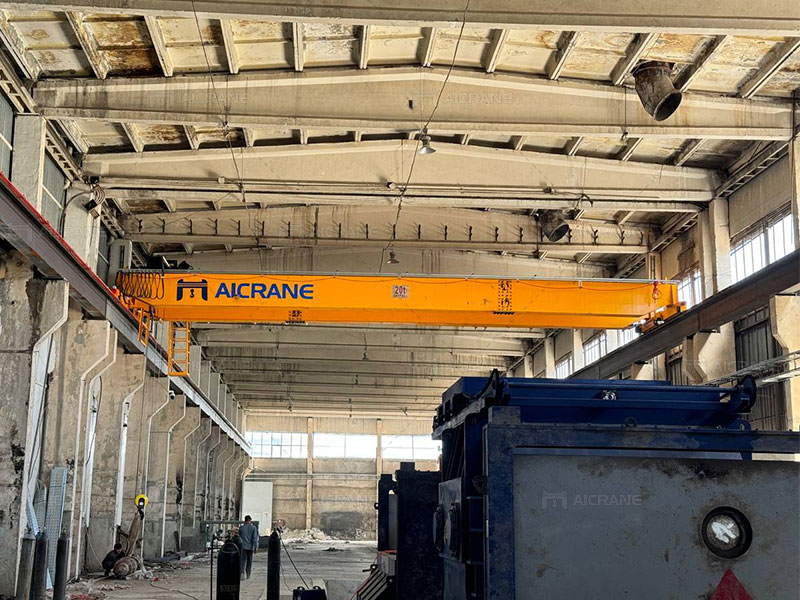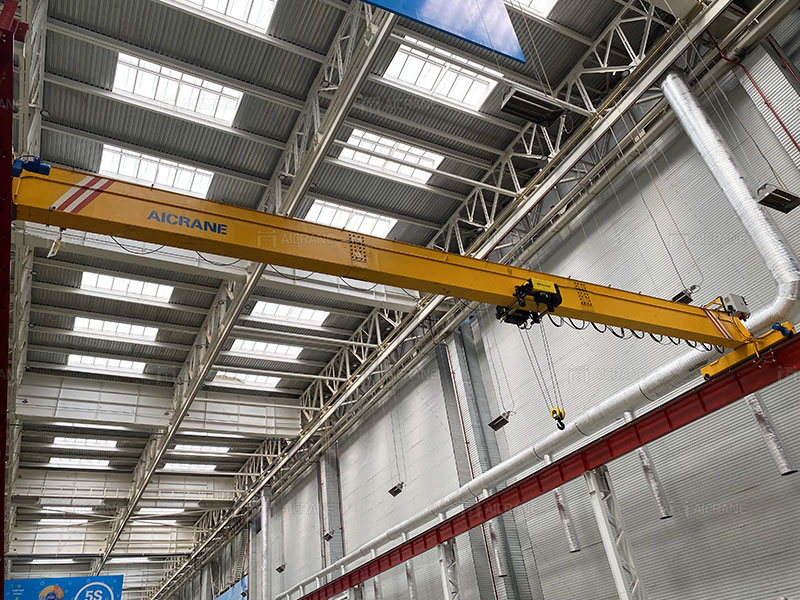When selecting the right overhead crane for your business, one of the most important decisions is choosing between a single girder and a double girder design. Each type has its unique characteristics, making it suitable for specific applications. In this article, we will explore the key differences in design, capacity, application, cost, and more to help you make an informed choice.

1. Structural Design
The most obvious difference between single girder and double girder overhead crane lies in the structure of the girders:
- Single Girder Cranes: These cranes have one main girder that supports the trolley and hoist. The trolley typically runs along the bottom flange of the girder. Single girder cranes are simpler in design, making them lightweight and easy to install.
- Double Girder Cranes: These cranes have two girders running parallel to each other, with the trolley mounted on rails on top of the girders. This design offers greater stability and allows for higher load capacities.
Key Design Comparison:
| Feature | Single Girder Overhead Crane | Double Girder Overhead Crane |
|---|---|---|
| Girders | 1 | 2 |
| Trolley Location | Under girder | On top of girders |
| Weight | Lighter | Heavier |
2. Load Capacity
Load capacity is a critical factor when choosing an overhead crane for sale.
- Single Girder Cranes: Typically designed for lighter loads, these cranes are ideal for capacities ranging from 1 ton to 20 tons. They are perfect for light-duty applications and environments where heavy lifting isn’t required.
- Double Girder Cranes: These cranes handle heavy loads, often exceeding 20 tons. They are the preferred choice for industries requiring high-capacity lifting, such as steel manufacturing, shipbuilding, and power plants.
3. Application Areas
The application of a crane is closely tied to its design and capacity.
- Single Girder Cranes: Commonly used in warehouses, workshops, and assembly lines. Their compact design makes them suitable for spaces with low ceilings or limited headroom.
- Double Girder Cranes: Best suited for demanding industries like heavy manufacturing, construction, and mining. They are ideal for applications requiring extended spans, higher lifting heights, and robust duty cycles.

4. Lifting Height and Span
The lifting height and span significantly differ between the two types.
- Single Girder Cranes: The lifting height is limited as the hoist runs under the girder. They are generally more suitable for shorter spans (up to 25 meters).
- Double Girder Cranes: These cranes offer greater lifting heights as the hoist runs on top of the girders. They can handle spans up to 40 meters or more.
Example:
A manufacturing plant requiring the movement of large machinery over a wide area would benefit from a double girder crane, while a smaller workshop might only need a single girder crane for moving lightweight parts.
5. Cost and Installation
The cost of an overhead crane plays a major role in deciding between these two options.
- Single Girder Cranes: Being simpler in design, these cranes are more economical in terms of initial investment. They also require fewer materials and are faster and cheaper to install.
- Double Girder Cranes: The complexity of the design and additional materials involved make these cranes more expensive upfront. Installation is also more labor-intensive due to their size and weight.
Cost Breakdown:
| Aspect | Single Girder Cranes | Double Girder Cranes |
|---|---|---|
| Initial Cost | Lower | Higher |
| Installation Cost | Economical | More Expensive |
| Long-term ROI | Moderate | Higher for heavy-duty use |
6. Operational Efficiency
Operational efficiency often depends on the type of crane used for specific tasks.
- Single Girder Cranes: Easier to operate and maintain, these cranes are better for straightforward applications. Their reduced weight also means lower energy consumption.
- Double Girder Cranes: While slightly more complex to operate, they offer unmatched efficiency for heavy-duty operations. Their ability to lift heavier loads at greater heights makes them indispensable for large-scale industrial use.
7. Customization and Upgrades
Both crane types can be customized, but double girder cranes generally offer more flexibility.
- Single Girder Cranes: Customization is usually limited to basic modifications such as the hoist or trolley.
- Double Girder Cranes: These cranes can be equipped with additional features like walkways, maintenance platforms, and auxiliary hoists, making them more versatile.
8. Maintenance Requirements
Maintenance frequency and complexity also differ:
- Single Girder Cranes: Require less maintenance due to their simpler design. Components are easier to access and replace, reducing downtime.
- Double Girder Cranes: Maintenance is more complex due to the additional components. However, their robust design often means fewer repairs are needed over time.
9. Energy Consumption
Energy efficiency is an important consideration, especially for businesses with heavy operational demands.
- Single Girder Cranes: Consume less energy due to their lighter design. They are ideal for applications where energy efficiency is a priority.
- Double Girder Cranes: Consume more energy but offer higher productivity, which can offset the increased energy usage in high-output environments.
10. Safety Features
Both types of cranes come with safety features, but double girder cranes often include advanced options due to the more common uses of overhead cranes in heavy-duty applications. These may include anti-sway technology, load monitoring systems, and emergency stop mechanisms.
Which Crane Should You Choose?
The decision ultimately depends on your operational requirements:
Choose Single Girder Cranes if:
- You need a cost-effective solution for light to medium lifting.
- Your workspace has height restrictions.
- You require straightforward and low-maintenance equipment.
Choose Double Girder Cranes if:
- You need to lift heavy loads regularly.
- Your operations require high lifting heights and extended spans.
- You need advanced customization options and enhanced safety features.
Conclusion
Single girder and double girder overhead cranes are both indispensable tools for modern industries. While single girder cranes excel in cost-efficiency and simplicity, double girder cranes stand out for their power and versatility in demanding applications. By evaluating your specific needs—such as load capacity, space constraints, budget, and application – you can select the ideal crane to maximize productivity and safety in your operations.
